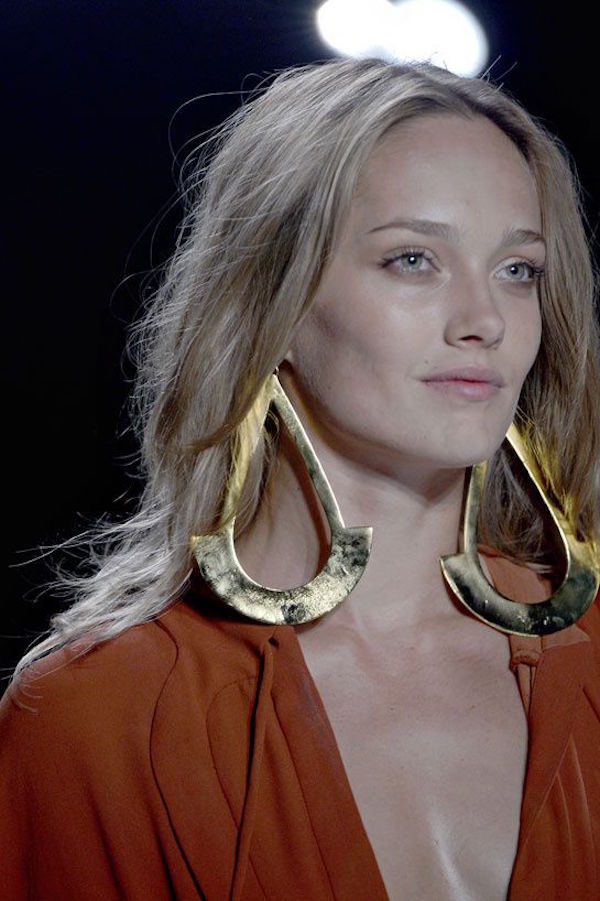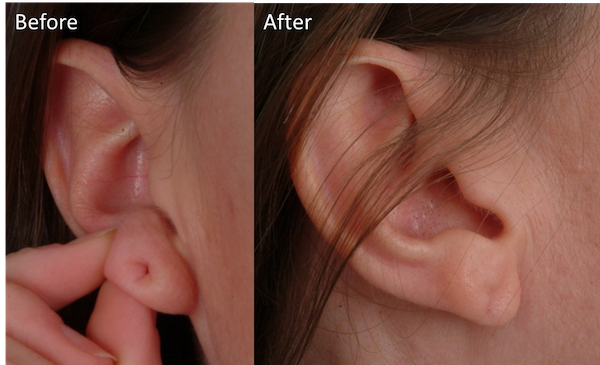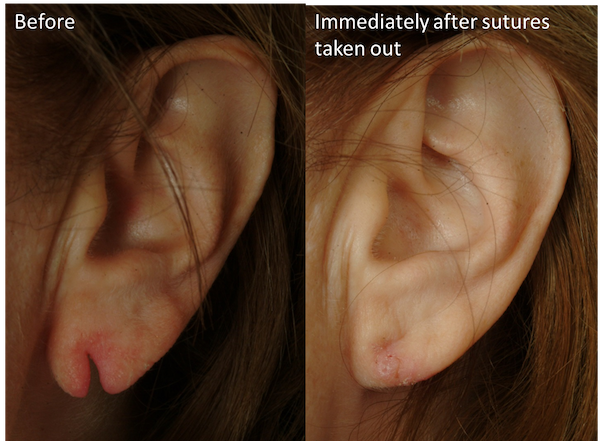
Image: Vogue Paris
Dr. Angela is back today talking all about the ears. From earlobe repair (we hate to break it to ya, but all those years of wearing those gigantic earrings that have been all the rage, become a problem as we age, get prepared to get them fixed!) to ear pinning, she’s covering it all. Keep on reading…
Earlobe Repair
With the popularity of heavy and hanging earrings over time, I am seeing more stretched or torn earlobes. This can be painful and definitely limits our ability to accessorize. How easy is it to fix this and who can do it?
Earlobe repair can be a straightforward procedure. It can be performed with just local anesthesia or light sedation, if the patient and surgeon prefers. I perform the repair with only local anesthesia in the operating room in my office. This can be performed by a Facial Plastic Surgeon, Plastic Surgeon and some Dermatologists.

If the piercing is elongated, but the edge of the earlobe is still intact, you may not be able to wear your favorite earrings and it is at risk to tear through the edge. This is a good time to consider having it repaired because it is much simpler than if the tear is through the edge. The piercing tract is removed and the edges are sewn with sutures in the front and back of the earlobe.

Earlobe tears that go through the edge of the lobe require a more complex repair. Simply freshening the edges and sewing them together will result in the scar contracting upward creating an unwanted scalloped appearance. Therefore, the repair must have a small but complex re-arrangement of the tissue at the edge to redistribute the healing forces and keep the smooth edge of the earlobe. There are a number of ways to re-arrange the tissue and every surgeon has their favorite.
With both stretched piercing and tears of the edge, there are techniques to allow the earlobe to be pierced at the time of repair. However, I have found that the lobe tends to be stronger and less likely to tear again if 6 weeks is allowed after the repair before re-piercing. Since the strength of skin at incisions is approximately 80% of the strength of healthy skin, the new piercing should in a place that makes the earring look good, but is not directly over the repair. In a few weeks you will be back to wearing your favorite fabulous earrings!
Ear Pinning
Summer is a really busy time for a plastic surgery practice. This is because many people have time off of work, school and social obligations. One of the things we see commonly during the summer is parents who bring their kids in because their ears bother them. Some people are born with ears that protrude more than others and this can be very stressful because of teasing and bullying. It is really rewarding to see not only kids, but also adults have more confidence after ear pinning surgery (otoplasty). If someone is considering ear pinning, the summer is a great time to do it because of the break in the school year. Even with a big change that improves the person’s confidence substantially, kids grow and change so quickly, their friends may not even notice that they had surgery when they go back to school.
Why does this happen?
Ears may protrude because of a few different reasons. Generally, it is developmental, so  just the way that you are made. Specifically, the conchal bowl, which is the circular, central portion may be large. This results in a good shape of the lateral ear, but just placed further away from the scalp.
just the way that you are made. Specifically, the conchal bowl, which is the circular, central portion may be large. This results in a good shape of the lateral ear, but just placed further away from the scalp.
The other possible reason is the antihelix isn’t as defined. The anti helix is the raised portion just inside the rim and outside of the conchal bowl. This results in a flatter appearance of the ear. Also, the ear lobe may be further away from the scalp. In some cases, two of the three or all three findings may be present.
How is otoplasty (ear pinning) done?
Therefore, the approach to the ears is individualized to each person and the findings that are present. To address any of the concerns above, the incision is made behind the ear, so that it is not visible. The appropriate cartilage is reconfigured and held in place with sutures. Then the incision is closed with sutures. Most surgeons will have the patient wear  a headband for a week or two, to hold the ears in place and protect them. The ears can be tender for a few weeks as the cartilage heals. With most things, the younger children tend to heal quicker than older children or adults.
a headband for a week or two, to hold the ears in place and protect them. The ears can be tender for a few weeks as the cartilage heals. With most things, the younger children tend to heal quicker than older children or adults.
When is a good age for ear pinning (otoplasty)?
It depends on the patient and the parents. The most common time to do this is about age 5 or 6. At this age, the ear is very close to the size that it will be as an adult, so ear surgery is safe. The child is just starting to become aware of the ears and they are starting or are about to start school, so addressing them can help with their self esteem and avoid bullying. Other people will decide to have this done later, which I have seen in almost every stage of life. However, not everyone is concerned about prominent ears. Surgery should not be rushed or pursued unless the person has concerns. We should remember to embrace ourselves, similarities, differences and our own unique beauty.
 In some people, this can be a life changing procedure that boosts confidence in every area of that person’s life!
In some people, this can be a life changing procedure that boosts confidence in every area of that person’s life!
Also, Dr. Angela is apart of an incredible social media campaign right now. Her idea for the campaign is ‘to be a positive self image campaign to encourage everyone to feel good about how they feel and look and not focus on what they ‘should look like’ at a certain age.’ Please watch the video below!
